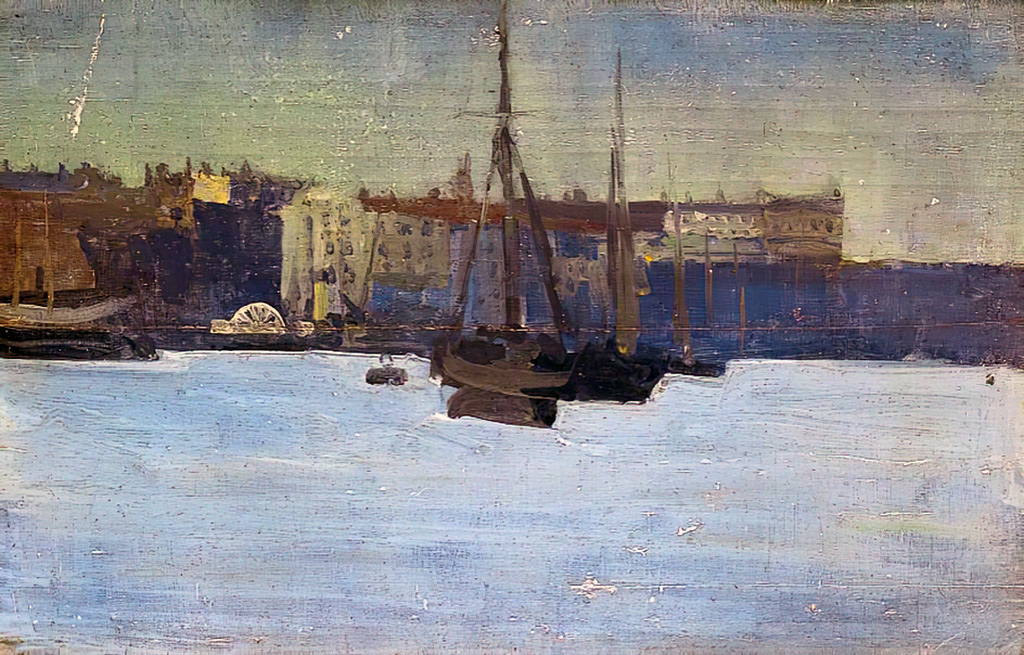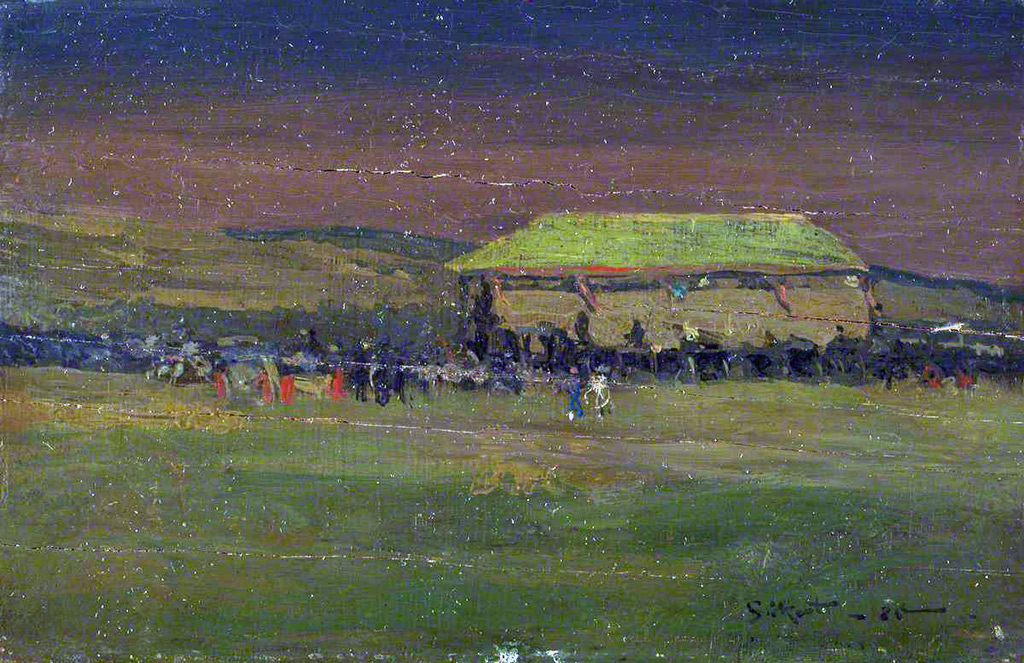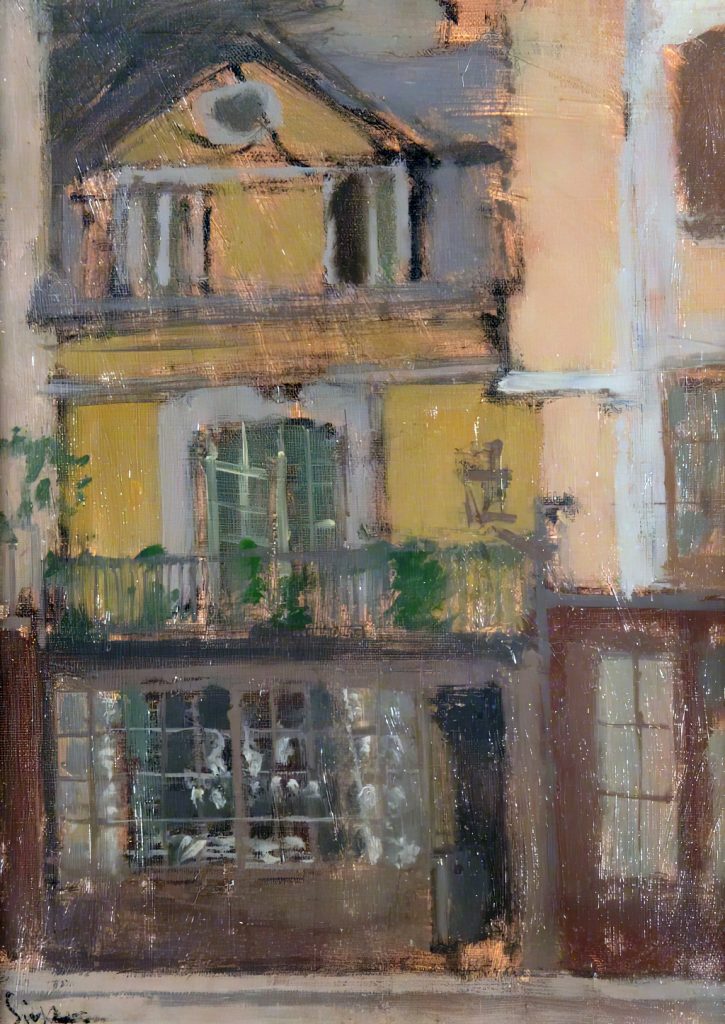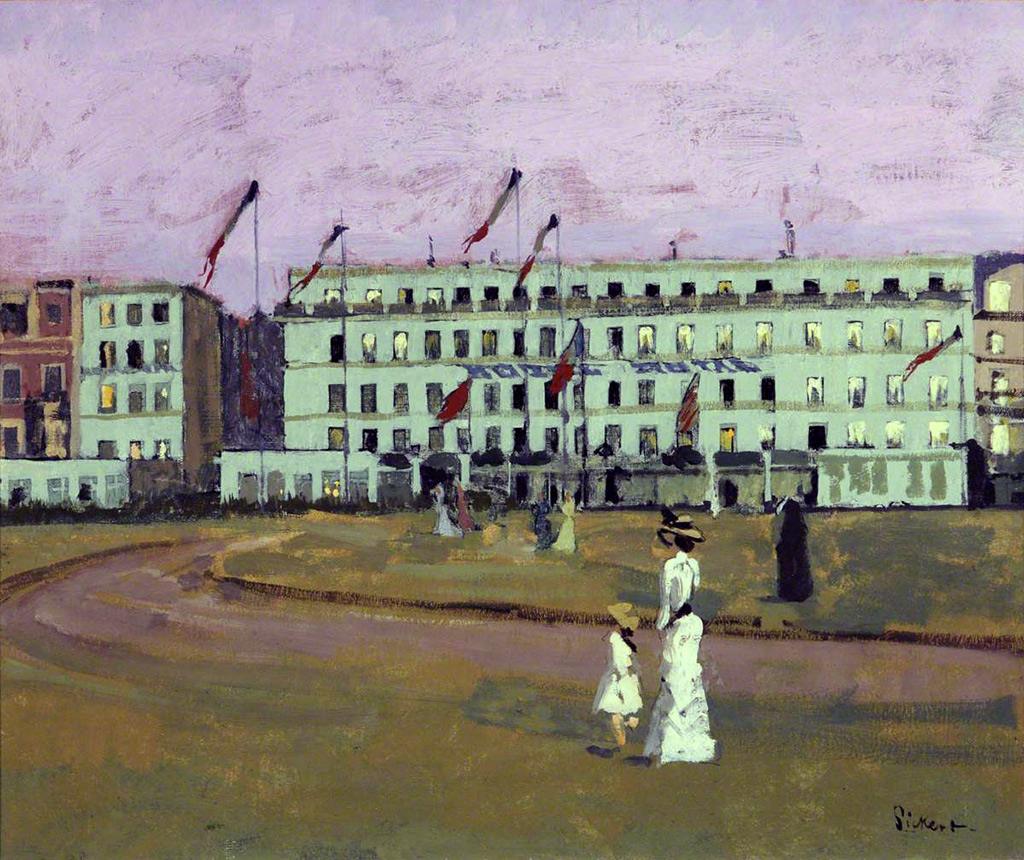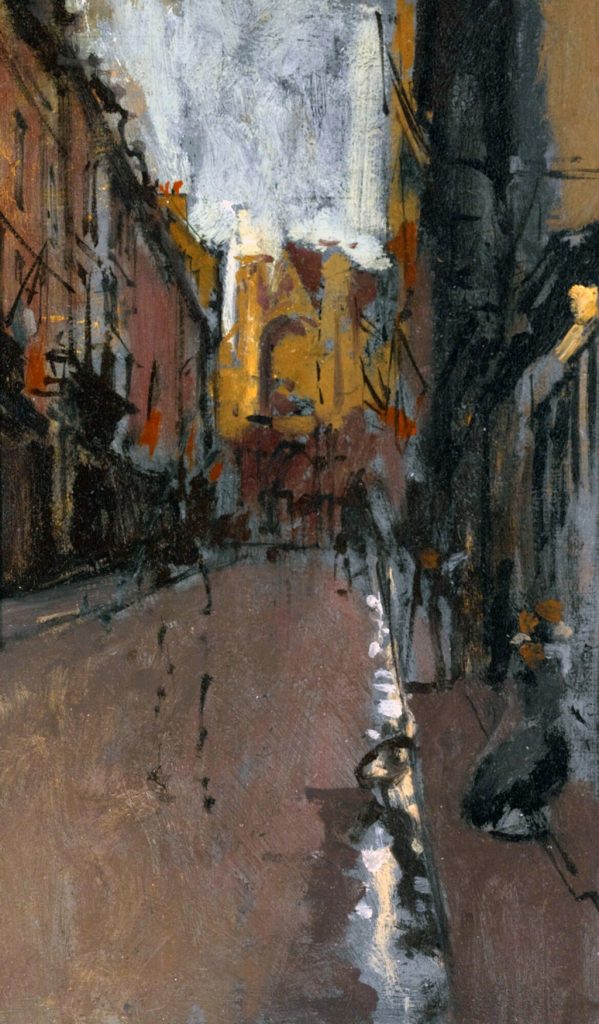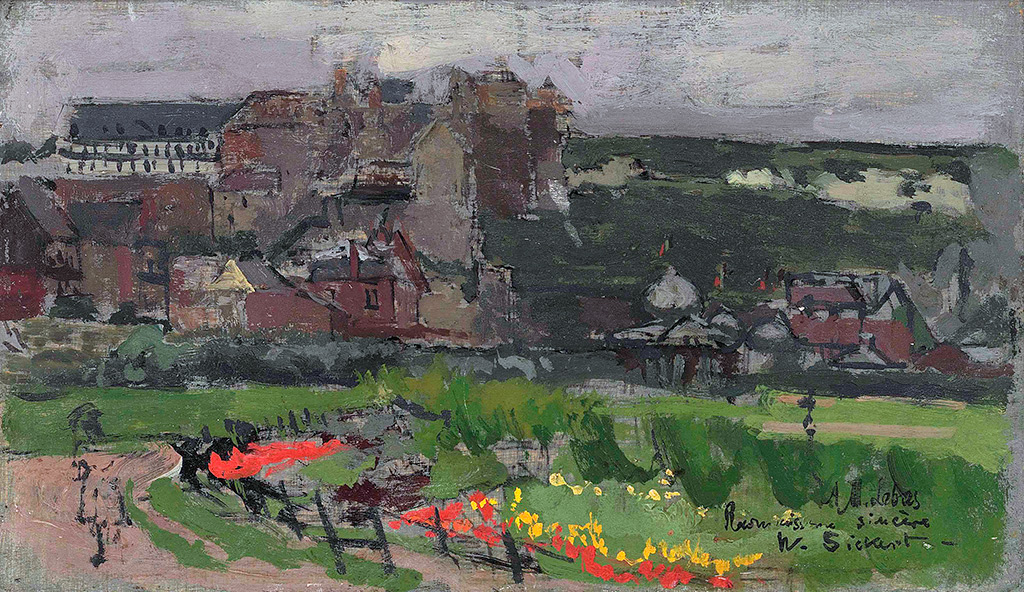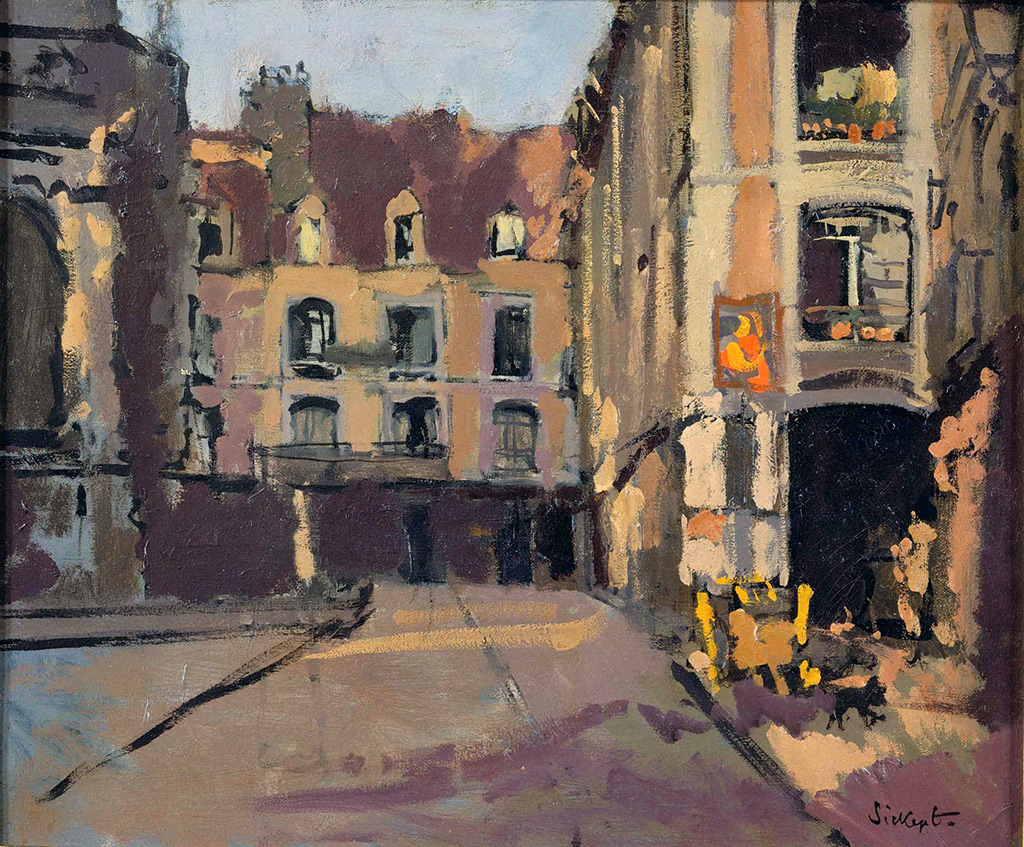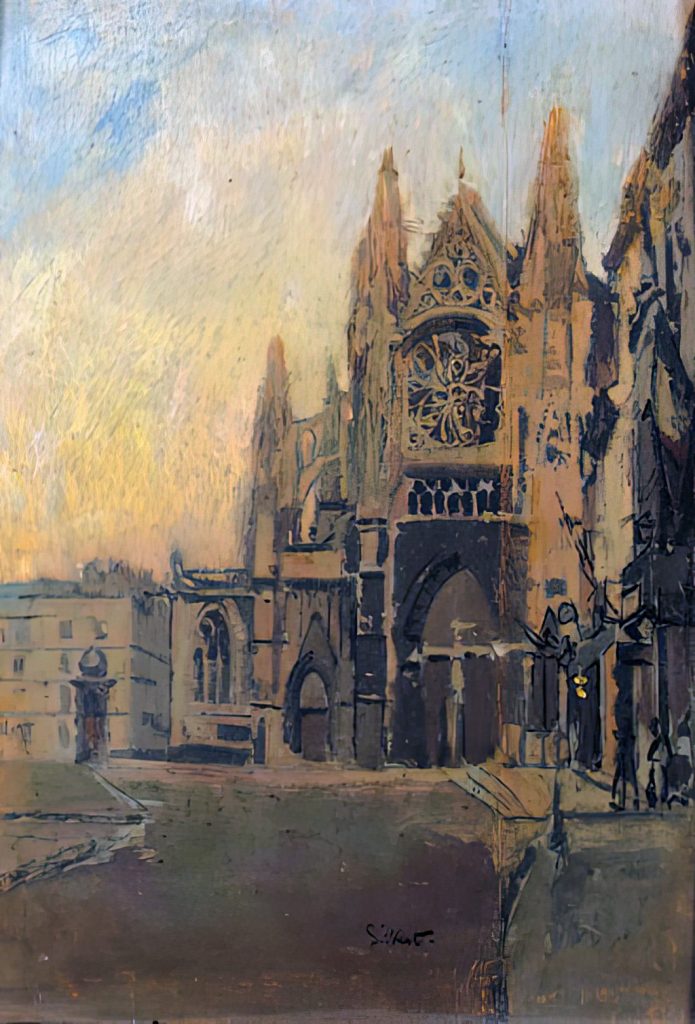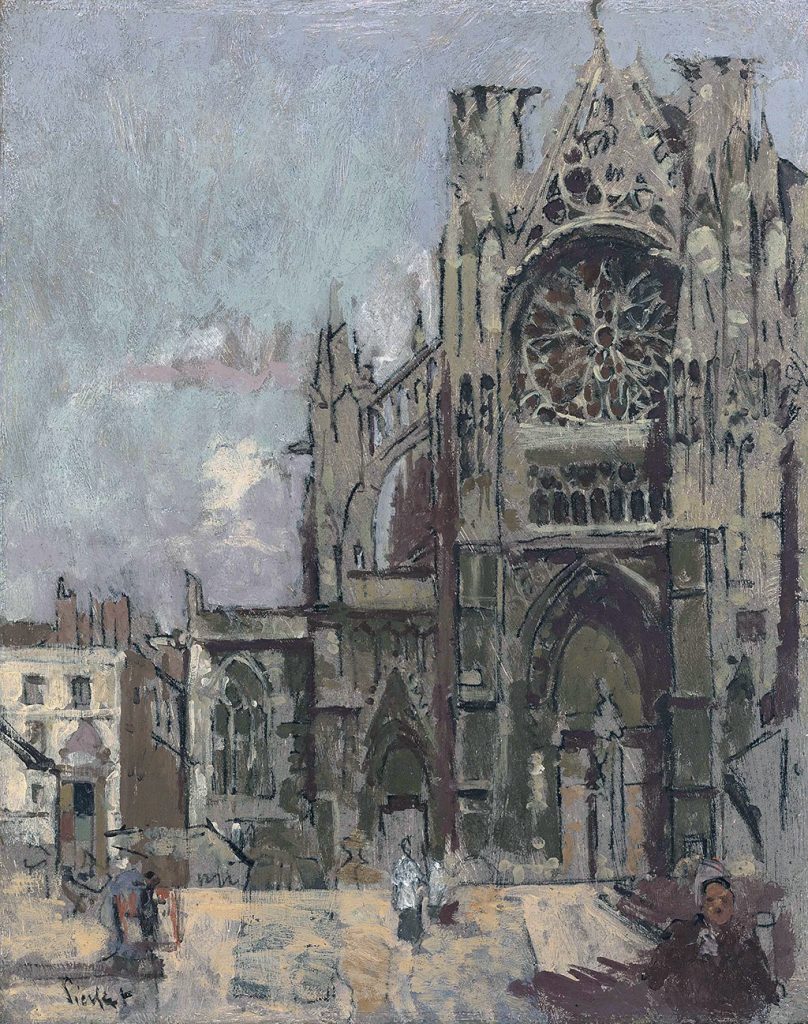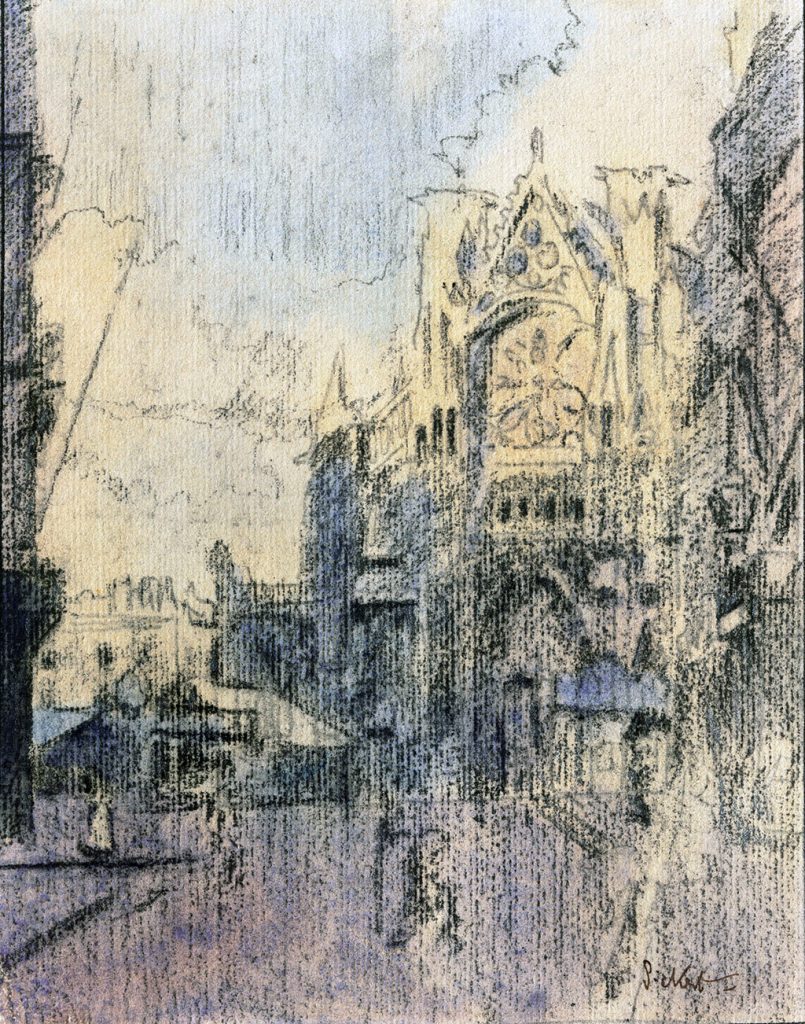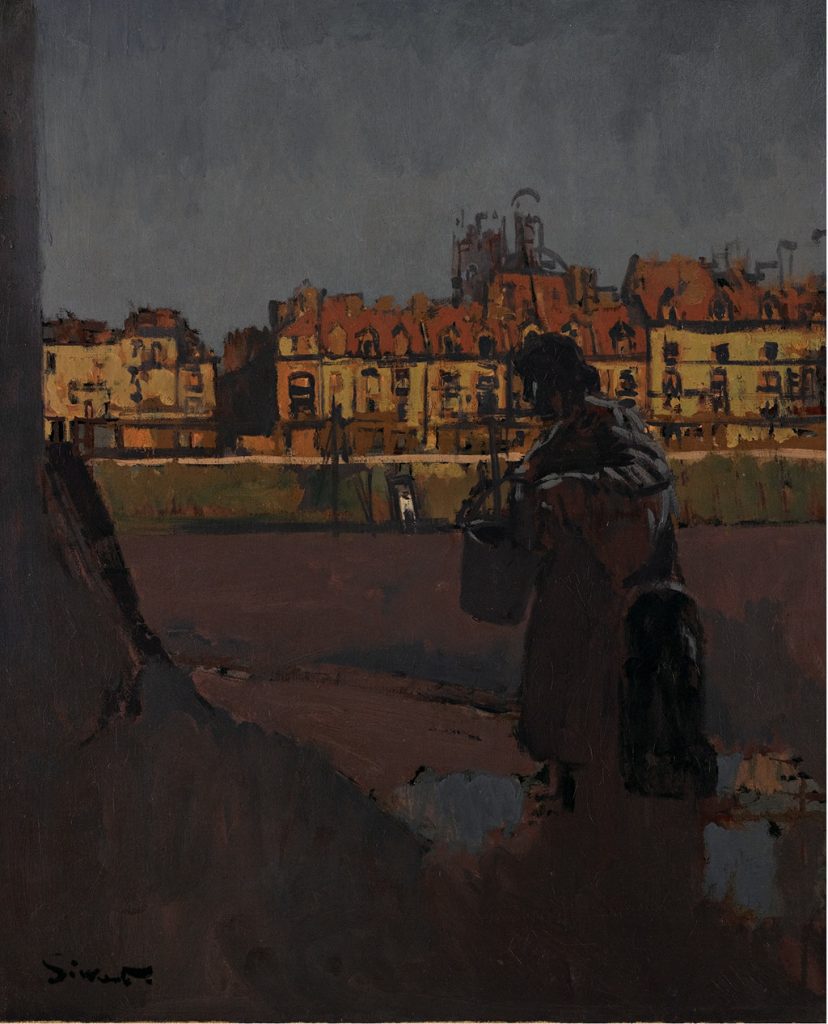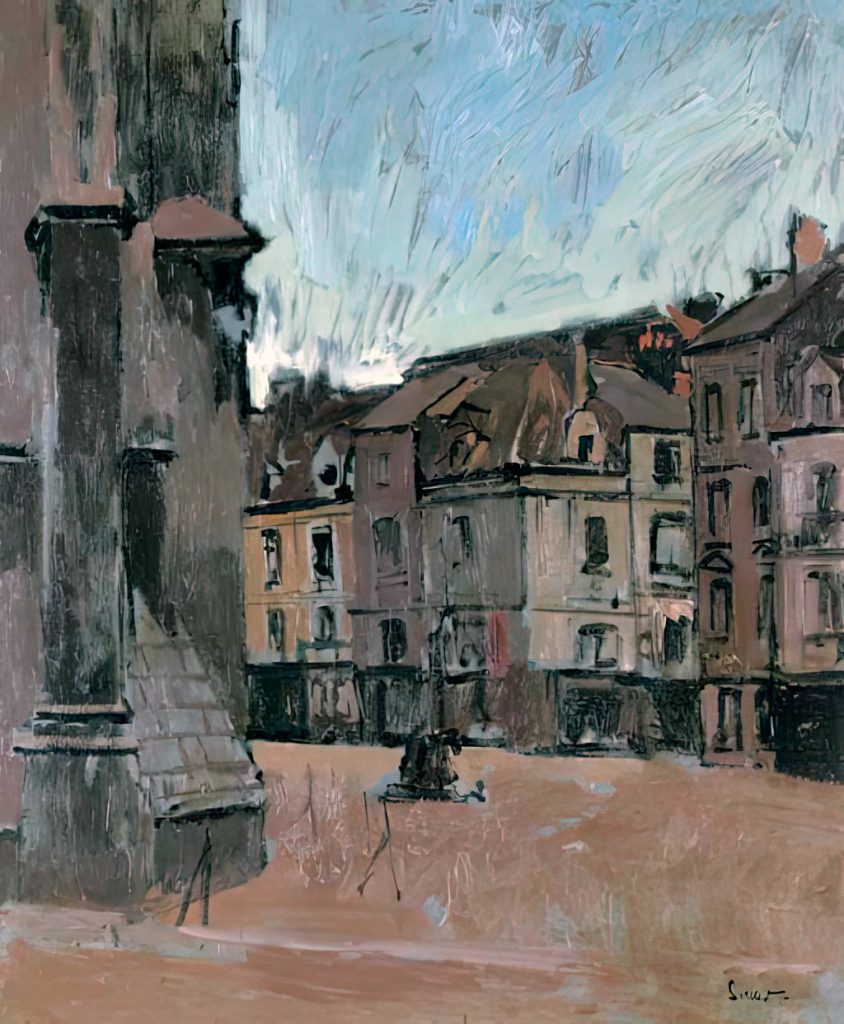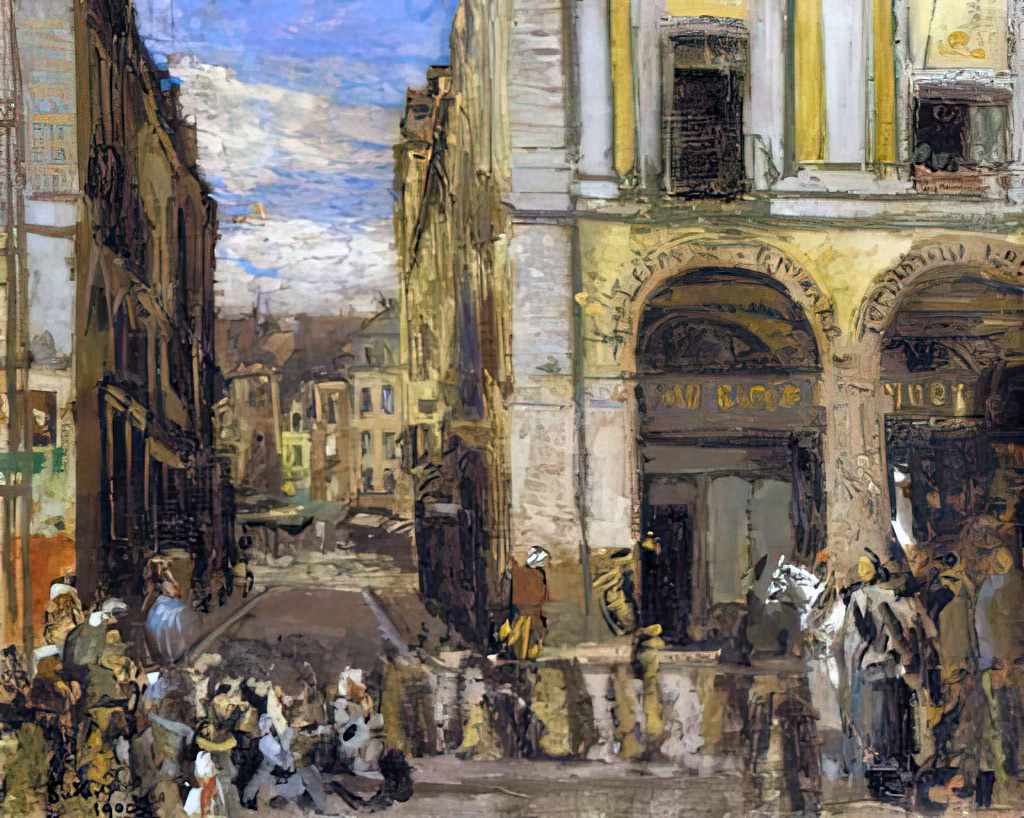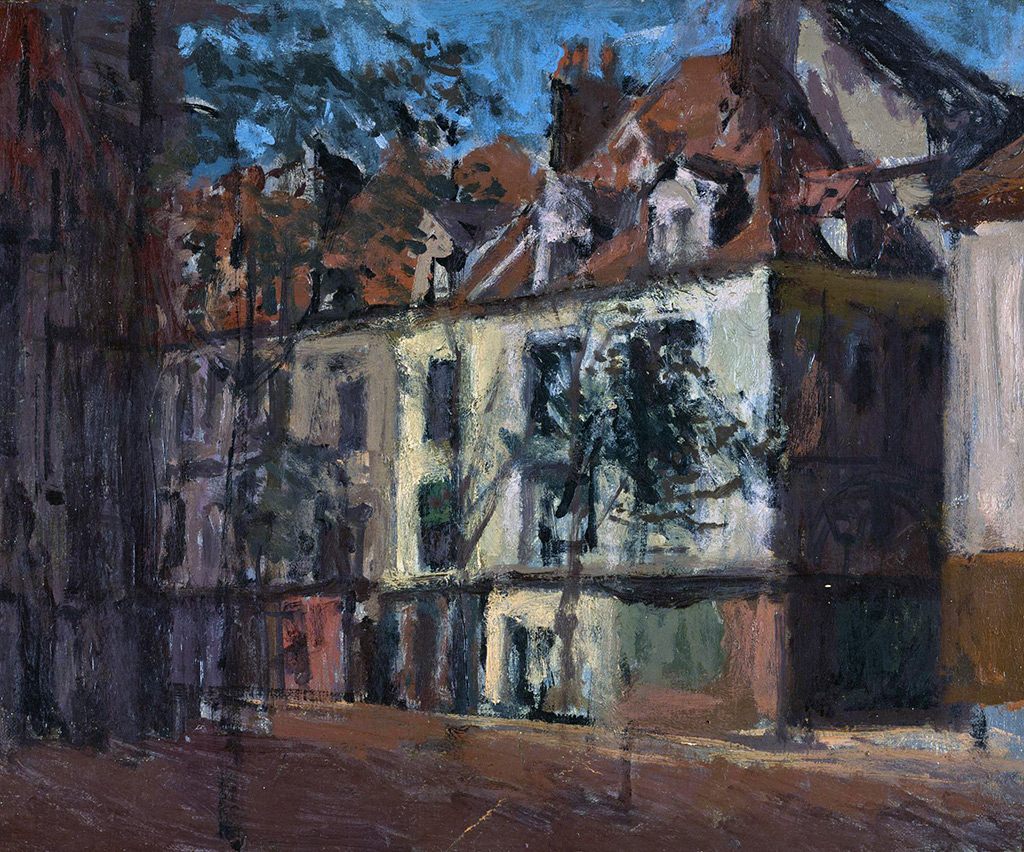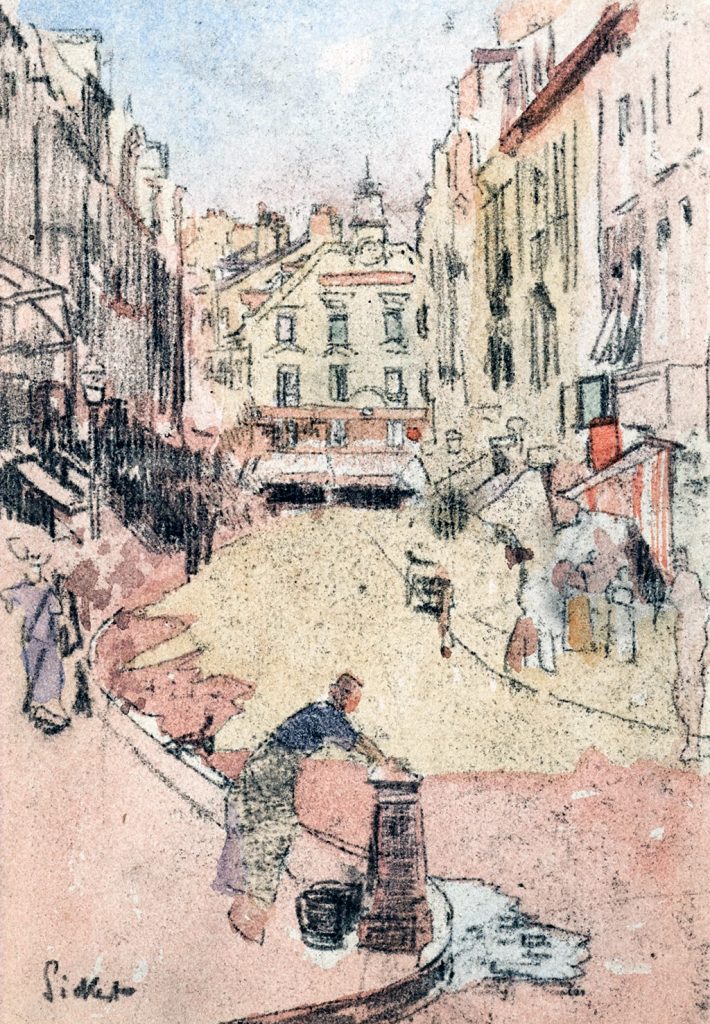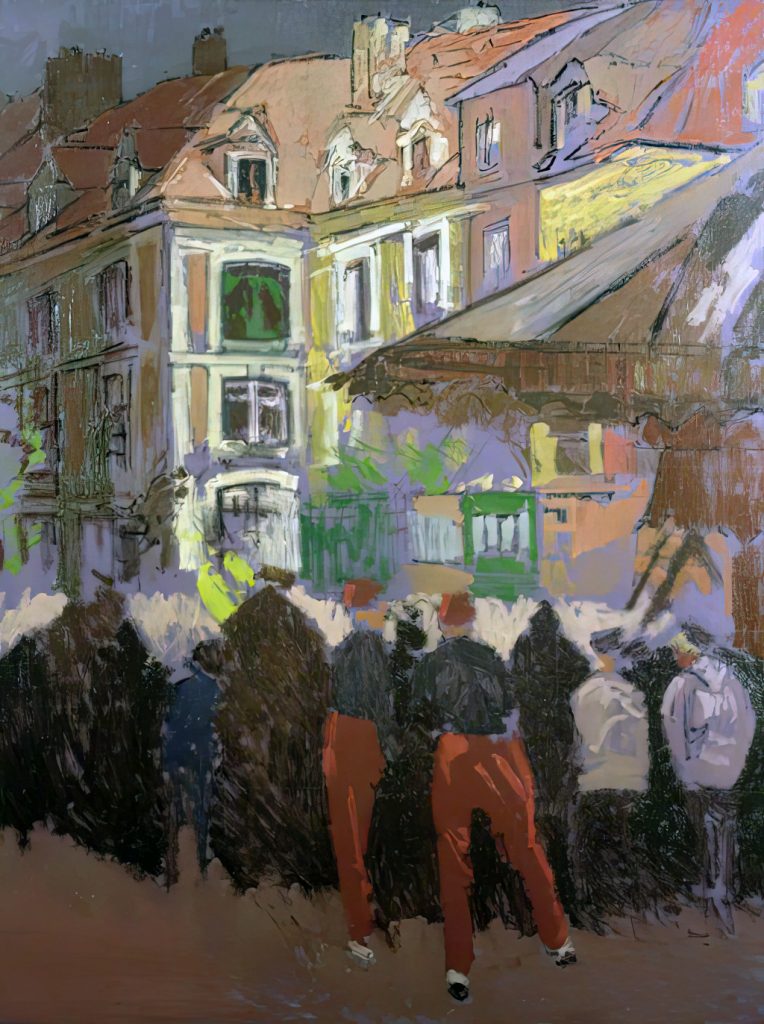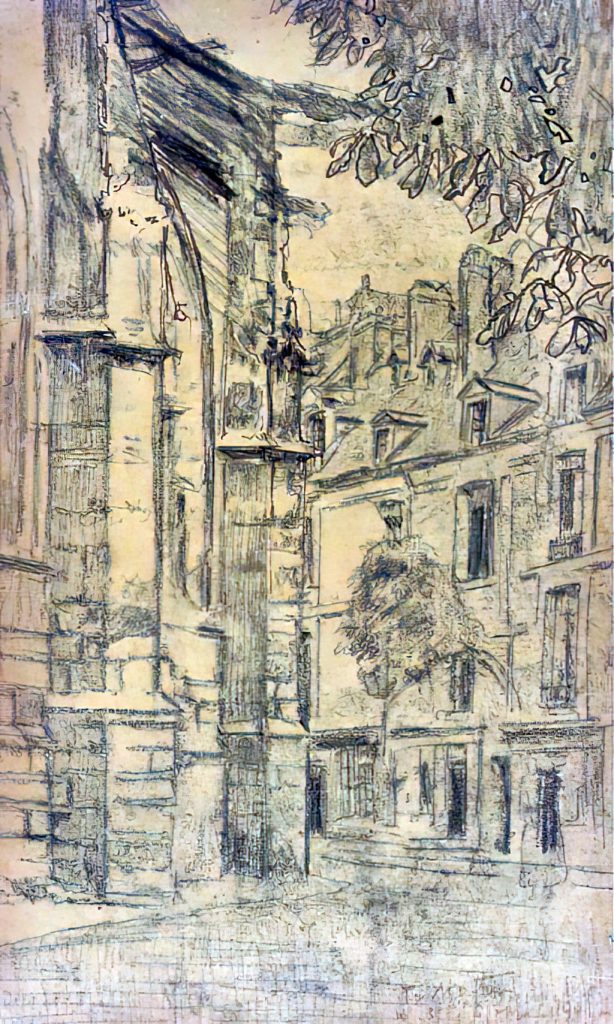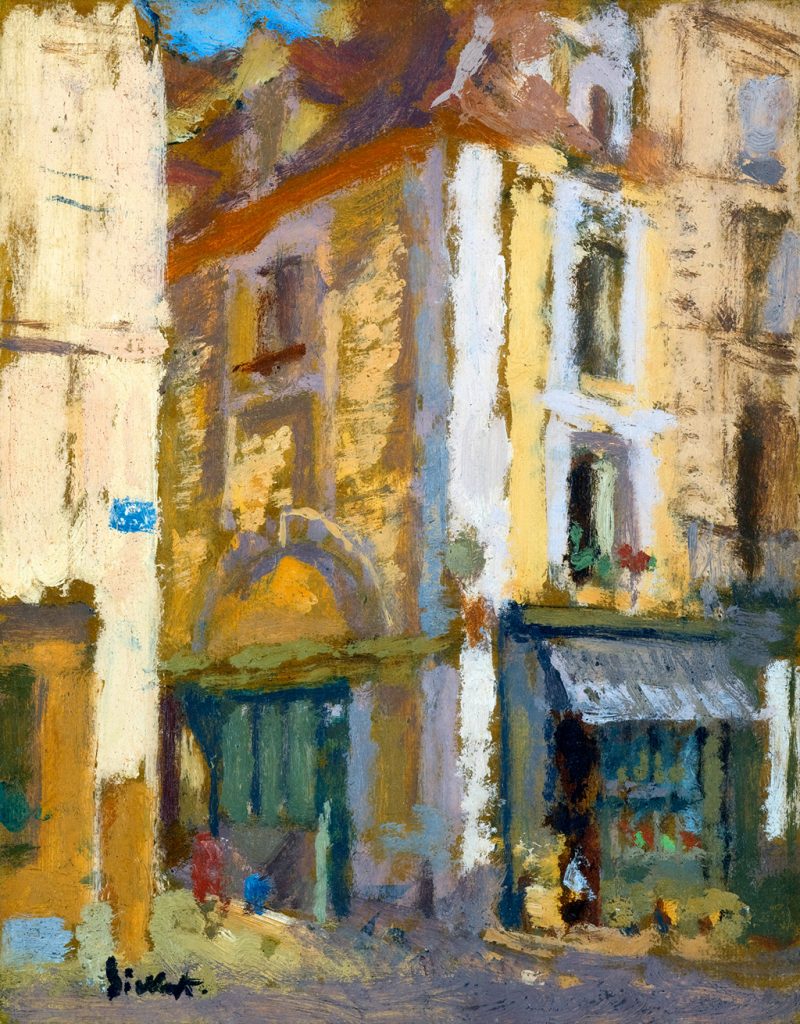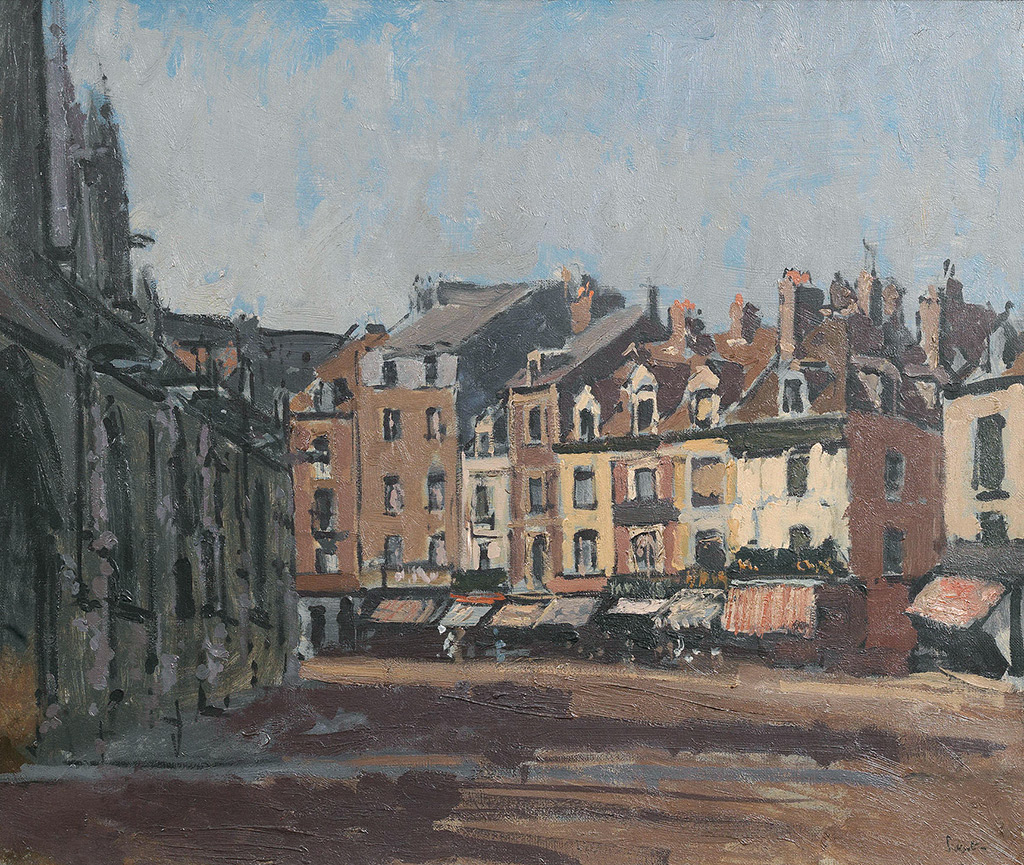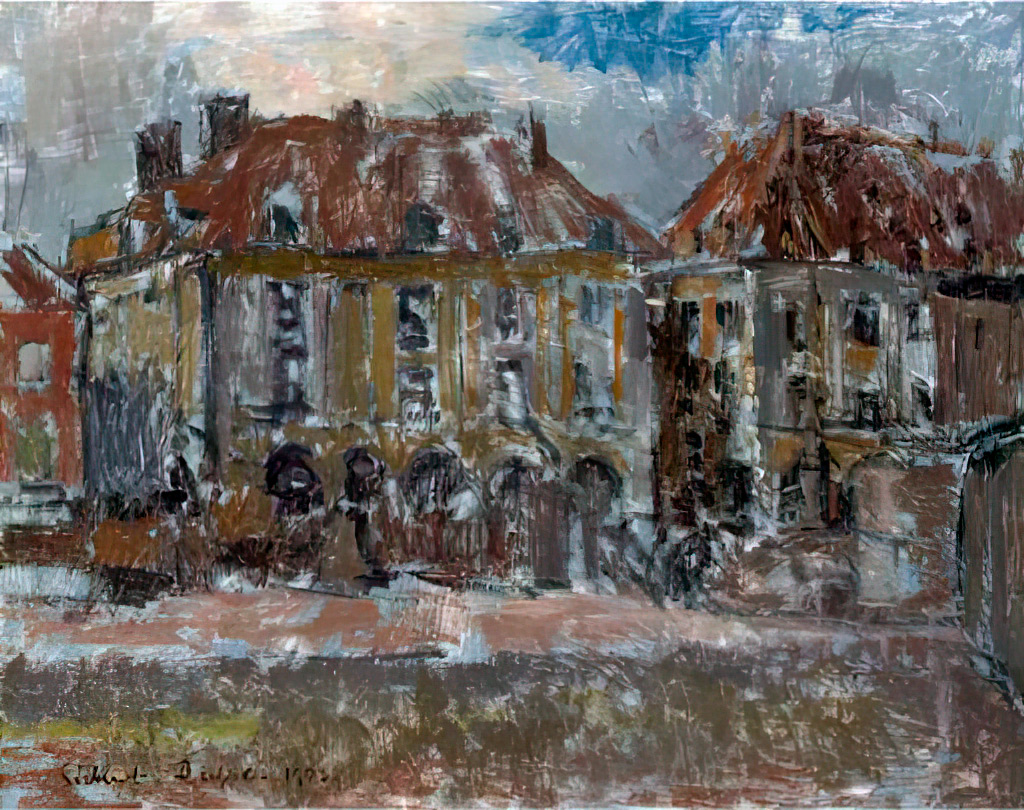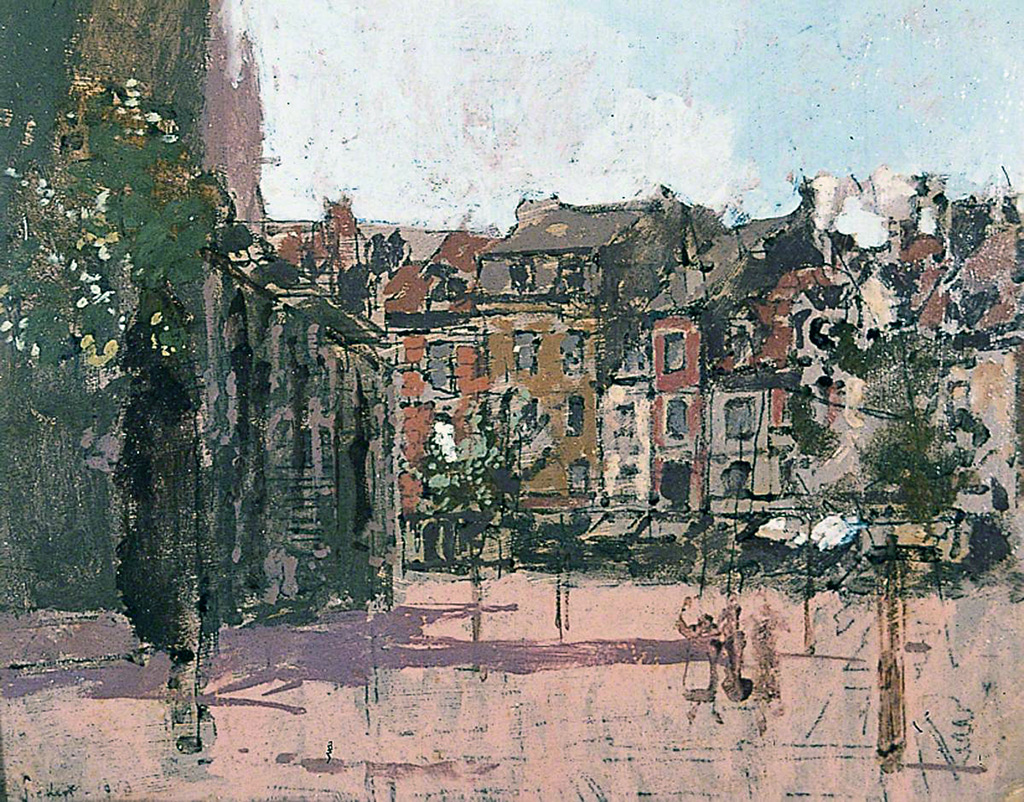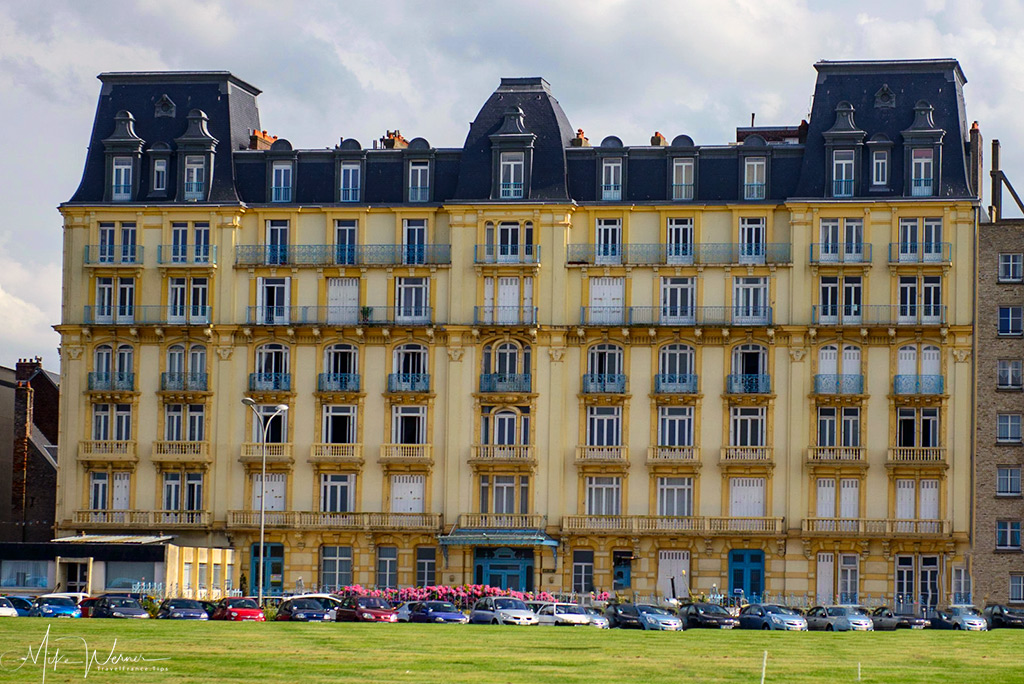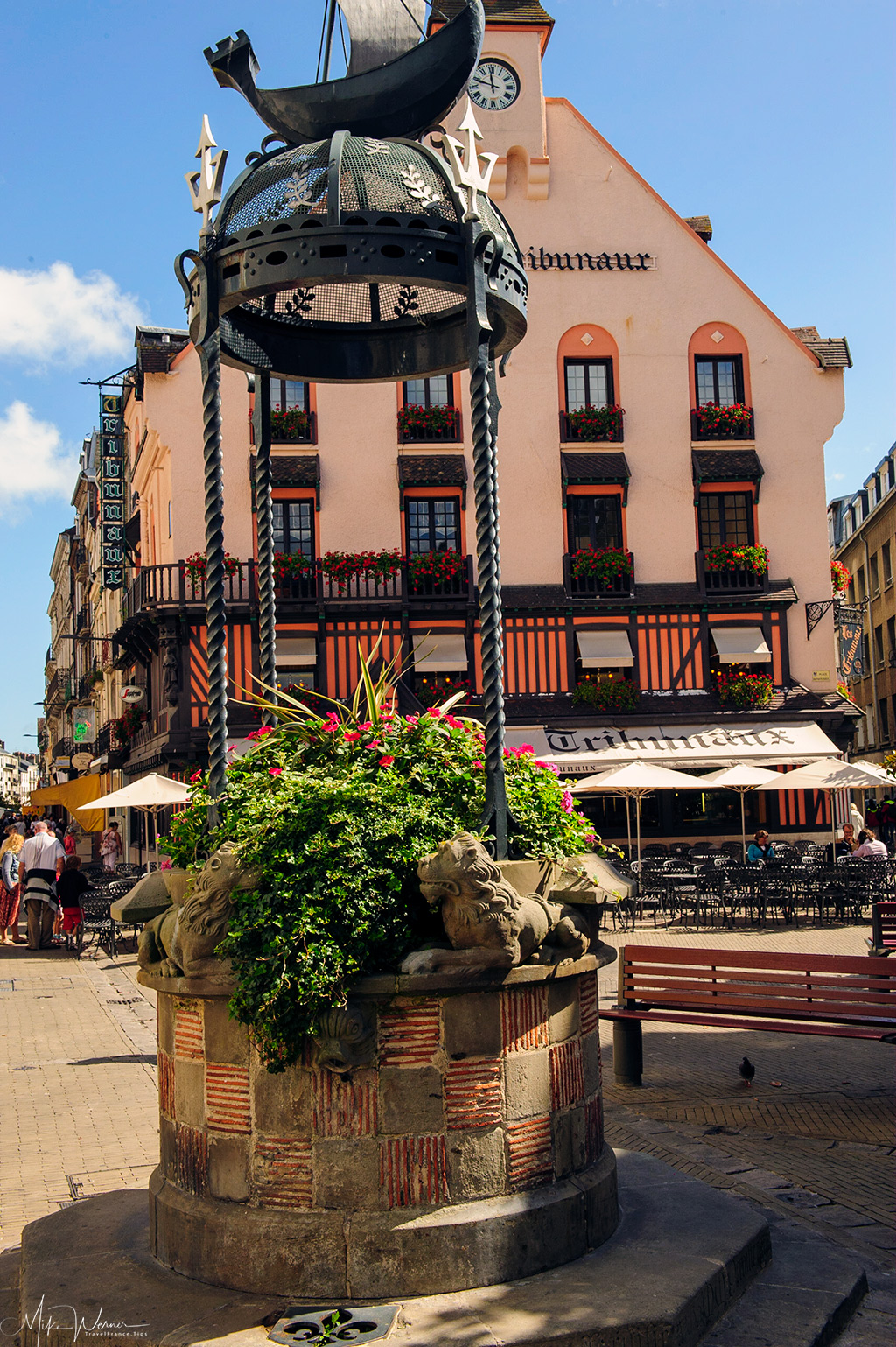This page forms part of a series of pages dedicated to the many artists who painted in Dieppe. A full list of all the artists with a link to their works can be found at the bottom of this page.
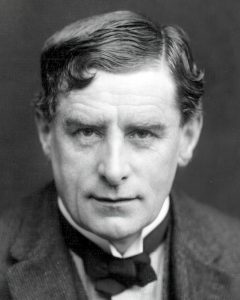
Walter Richard Sickert (1860 – 1942) was a British painter and printmaker who was a member of the Camden Town Group of Post-Impressionist artists in early 20th-century London. He was an important influence on distinctively British styles of avant-garde art in the mid- and late 20th century.
Sickert was a cosmopolitan and eccentric who often favoured ordinary people and urban scenes as his subjects. His work includes portraits of well-known personalities and images derived from press photographs. He is considered a prominent figure in the transition from Impressionism to Modernism.
Sickert was born in Munich, Germany, on 31 May 1860, the eldest son of Oswald Sickert, a Danish-German artist, and his wife, Eleanor Louisa Henry, who was an illegitimate daughter of the British astronomer Richard Sheepshanks. In 1868, following the German annexation of Schleswig-Holstein, the family settled in Britain, where Oswald’s work had been recommended by Freiherrin Rebecca von Kreusser to Ralph Nicholson Wornum, who was Keeper of the National Gallery at the time.
The family obtained British nationality. The young Sickert was sent to University College School from 1870 to 1871, before transferring to King’s College School, where he studied until the age of 18. Though he was the son and grandson of painters, he first sought a career as an actor; he appeared in small parts in Sir Henry Irving’s company, before taking up the study of art in 1881. After less than a year’s attendance at the Slade School, Sickert left to become a pupil of and etching assistant to James Abbott McNeill Whistler. Sickert’s earliest paintings were small tonal studies painted alla prima from nature after Whistler’s example.
In 1883 he travelled to Paris and met Edgar Degas, whose use of pictorial space and emphasis on drawing would have a powerful effect on Sickert’s work. He developed a personal version of Impressionism, favouring sombre colouration.
In the late 1880s he spent much of his time in France, especially in Dieppe, which he first visited in mid-1885, and where his mistress, and possibly his illegitimate son, lived.
Just before the First World War he championed the avant-garde artists Lucien Pissarro, Jacob Epstein, Augustus John and Wyndham Lewis. At the same time Sickert founded, with other artists, the Camden Town Group of British painters, named from the district of London in which he lived.
After the death of his second wife in 1920, Sickert relocated to Dieppe, where he painted scenes of casinos and cafe life until his return to London in 1922. In 1924, he was elected an Associate of the Royal Academy (ARA).
Sickert painted an informal portrait of Winston Churchill in about 1927. Churchill’s wife Clementine introduced him to Sickert, who had been a friend of her family. The two men got along so well that Churchill, whose hobby was painting, wrote to his wife that “He is really giving me a new lease of life as a painter.”
Sickert took a keen interest in the crimes of Jack the Ripper and believed he had lodged in a room used by the notorious serial killer. He had been told this by his landlady, who suspected a previous lodger. Sickert did a painting of the room and titled it Jack the Ripper’s Bedroom. It shows a dark, melancholy room with most details obscured.
Although for over 80 years there was no mention of Sickert being a suspect in the Ripper crimes, in the 1970s authors began to explore the idea that Sickert was Jack the Ripper or his accomplice.
Sickert died in Bath, Somerset in 1942, at the age of 81.
Click here to read more about this British artist on Wikipedia.
NOTE: This is PART 1 of a lot of Sickert’s works for Dieppe.
PART 1 (this article) deals with his works from 1884 to 1903.
PART 2 deals with his works from 1904 to 1920. Click here to read it.
PART 3 deals with the Dieppe suburbs (Envermeu, Martin Eglise, Neuville, Sainte Marguerite Sur Mer and Torqueville). Click here to read it.
NOTE: This is a very art-rich page. There are 41 paintings and therefore the page will load slowly!
NOTE: Click on any image below for a bigger version (no new window will open).
NOTE: A black box like this one, means that there is an explanation text about today’s situation of the painting above it.
NOTE: Click on this photo icon ![]() anywhere below a painting to see a photo of what the area looks like today.
anywhere below a painting to see a photo of what the area looks like today.
NOTE: A blue box like this one, means there is an explanation or a note.
TODAY: Dieppe still has a horse race track.
TODAY: Bathing huts are still very popular in Dieppe, and all over Normandy.
TODAY: The old Hotel Royal is one of the last few old buildings left in Dieppe (apart from the castle and a few of its walls/towers and the churches). It can be seen from the beach promenade.
TODAY: The Rue Saint Jacques still exists, and is a narrow shopping street that ends at the Saint-Jacques church.
TODAY: The Rue Notre-Dame is a wide road that run alongside the Duquesne basin. It still exists today and is one of the main traffic arteries of the city.
TODAY: Don’t look for them, since the gardens no longer exist. And the beautiful casino building has been replaced by a very modern one.
TODAY: Marquis Abraham Duquesne was a French admiral who was born in Dieppe. Click here to read more about the man.
TODAY: The Rue Sainte Catherine still exists and runs alongside the Saint-Jacques church.
TODAY: The Notre-Dame road enters a large roundabout that is the main point when you come from the ferry harbor. It is also where the Tourist Office is located.
TODAY: The Grande Rue is the main shopping street of Dieppe. It’s mostly pedestrians only, and connects from the roundabout of the Quai Henri IV to the square (triangle) that houses the famous Cafe des Tribunaux.
TODAY: The Pollet is a district of Dieppe where the fishermen used (and still) live.
TODAY: The Church inside the Pollet (Notre-Dame-des-Greves de Dieppe) district still exists today and can be visited. It is a church destined for sailors.
TODAY: The Arcades at the harbor front still mostly exist today. They are a passageway that kept people dry during the rain, allowing to shop of eat.
TODAY: The Cafe des Tribunaux is an institution in Dieppe, as is the “Dirty Well” (Puits Sale).
Walter Sickert painted mostly in Dieppe and its surroundings when he was in France. He did paint in Paris and one other place in France (a link “⇠” to his works will appear below when published):
- Auberville
- Dieppe (and surroundings) ⇠
Dieppe in Normandy was a popular place for artists to come and apply their art. Here is a list, non exhaustive, of the artists that painted in Dieppe.
A link (“⇠”) to the artist’s works will appear when published (a “*” indicates that the artist did not work directly in Dieppe, instead worked in nearby villages):
- 🇫🇷 Blanche, Jacques-Emile ⇠
- 🇺🇸 Boggs, Frank Myers ⇠
- 🇷🇺 Bogolyubov, Alexey (Alexei) ⇠
- 🇬🇧 Bonington, Richard Parkes ⇠
- 🇫🇷 Boudan, Louis ⇠
- 🇫🇷 Boudin, Eugene-Louis ⇠
- 🇬🇧 Boys, Thomas Shotter ⇠
- 🇫🇷 Braque, Georges ⇠
- 🇫🇷 Bruelle, Gaston ⇠
- 🇫🇷 Burel, Henry E. ⇠
- 🇬🇧 Burgess Jr, John ⇠
- 🇺🇸 Butler, Theodore Earl ⇠
- 🇬🇧 Callow, William ⇠
- 🇬🇧 Cameron, David Young ⇠
- 🇺🇸 Chapman, Conrad Wise ⇠
- 🇫🇷 Ciceri, Eugene ⇠
- 🇬🇧 Conder, Charles ⇠
- 🇬🇧 Cooke, Edward William ⇠
- 🇫🇷 Corot, Jean-Baptiste Camille ⇠
- 🇬🇧 Cotman, John Sell ⇠
- 🇫🇷 Courbet, Gustave ⇠
- 🇬🇧 Cox Sr, David ⇠
- 🇫🇷 Cyr, Georges Albert ⇠
- 🇬🇧 Cundall, Charles ⇠
- 🇫🇷 Daubigny, Charles-Francois ⇠
- 🇦🇺 Davies, David ⇠
- 🇫🇷 de Jolimont, Theodore Basset ⇠
- 🇬🇧 Dibdin, Thomas Colman ⇠
- 🇬🇧 Dommersen, William ⇠
- 🇳🇱 Doomer, Lambert ⇠
- 🇫🇷 Dubourg, Louis-Alexandre ⇠
- 🇮🇪 Dunlop, Ronald Ossory ⇠
- 🇬🇧 Fergusson, John Duncan ⇠
- 🇫🇷 Friesz, Othon ⇠
- 🇫🇷 Garneray, Ambroise Louis ⇠
- 🇫🇷 Gauguin, Paul ⇠
- 🇫🇷 Goeneutte, Norbert ⇠
- 🇫🇷 Gonzales, Eva ⇠
- 🇬🇧 Gosse, Sylvia ⇠
- 🇫🇷 Guerard, Henri ⇠
- 🇫🇷 Guiaud, Jacques ⇠
- 🇫🇷 Guillaumin, Armand ⇠
- 🇫🇷 Haquette, Georges Jean-Marie ⇠
- 🇬🇧 Hardy, Thomas Bush ⇠
- 🇫🇷 Hervier, Louis Adolphe ⇠
- 🇫🇷 Hoguet, Charles ⇠
- 🇬🇧 Huet, Paul ⇠
- 🇫🇷 Isabey, Eugene ⇠
- 🇬🇧 Jamieson, Alexander ⇠
- 🇳🇱 Jongkind, Johan Barthold ⇠
- 🇬🇧 Kay, James ⇠
- 🇷🇺 Korovin, Konstantin ⇠
- 🇫🇷 Kuwasseg, Charles Euphrasie ⇠
- 🇫🇷 Le Secq, Henri ⇠
- 🇫🇷 Lebourg, Albert ⇠
- 🇬🇧 Lee-Hankey, William ⇠
- 🇫🇷 Lemaitre, Leon-Jules ⇠
- 🇫🇷 Letellier, Emile-Andre ⇠
- 🇫🇷 Loir, Luigi ⇠
- 🇫🇷 Loiseau, Gustave ⇠
- 🇫🇷 Luce, Maximilien ⇠
- 🇫🇷 Maclet, Elisee ⇠
- 🇫🇷 Madelain, Gustave ⇠
- 🇫🇷 Manzana-Pissarro, Georges Henri ⇠
- 🇫🇷 Marquet, Albert ⇠
- 🇫🇷 Mathon, Emile Louis ⇠
- 🇫🇷 Maze, Paul ⇠
- 🇬🇧 McEvoy, Ambrose ⇠
- 🇫🇷 Michallon, Achille Etna ⇠
- 🇫🇷 Monet, Claude ⇠
- 🇬🇧 Montague, Alfred ⇠
- 🇫🇷 Moret, Henry ⇠
- 🇫🇷 Mozin, Charles Louis ⇠
- 🇫🇷 Noel, Jules Achille ⇠
- 🇺🇸 Norton, William Edward ⇠
- 🇫🇷 Pissarro, Camille ⇠
- 🇫🇷 Pissarro, Lucien * ⇠
- 🇺🇸 Prendergast, Maurice ⇠
- 🇬🇧 Prout, Samuel ⇠
- 🇫🇷 Renoir, Pierre-Auguste ⇠
- 🇬🇧 Roberts, David ⇠
- 🇬🇧 Sickert, Walter Richard ⇠
- 🇬🇧 Smith, Matthew Arnold Bracy ⇠
- 🇬🇧 Smallwood, William Frome * ⇠
- 🇬🇧 Stanfield, Clarkson Frederick ⇠
- 🇳🇴 Thaulow, Fritz ⇠
- 🇫🇷 Thornley, Georges William ⇠
- 🇧🇪 Timmermans, Louis-Etienne ⇠
- 🇬🇧 Turner, William ⇠
- 🇨🇭 Vallotton, Felix ⇠
- 🇫🇷 Vernet, Claude-Joseph ⇠
- 🇫🇷 Vollon, Antoine ⇠
- 🇩🇪 Weber, Theodore Alexander ⇠
- 🇺🇸 Whistler, James McNeill ⇠
NOTE: You can subscribe to our new articles by entering your email address in the box on the right column (or at the very bottom of this article) and clicking on the button “Subscribe”.
You will need to check your incoming emails and validate your subscription. If you can’t see an email from us, check your Spam folder. Without validating your email address, you will not get notifications from us. WE WILL NEVER GIVE YOUR EMAIL ADDRESSES TO ANYONE!
Related Posts
- 99
 Walter Richard Sickert RA RBA (1860 – 1942) was a British painter and printmaker who was a member of the Camden Town Group of Post-Impressionist artists in early 20th-century London. He was an important influence on distinctively British styles of avant-garde art in the mid- and late 20th century. In…
Walter Richard Sickert RA RBA (1860 – 1942) was a British painter and printmaker who was a member of the Camden Town Group of Post-Impressionist artists in early 20th-century London. He was an important influence on distinctively British styles of avant-garde art in the mid- and late 20th century. In… - 98
 Walter Richard Sickert RA RBA (1860 – 1942) was a British painter and printmaker who was a member of the Camden Town Group of Post-Impressionist artists in early 20th-century London. He was an important influence on distinctively British styles of avant-garde art in the mid- and late 20th century. In…
Walter Richard Sickert RA RBA (1860 – 1942) was a British painter and printmaker who was a member of the Camden Town Group of Post-Impressionist artists in early 20th-century London. He was an important influence on distinctively British styles of avant-garde art in the mid- and late 20th century. In… - 87
 Walter Richard Sickert RA RBA (1860 – 1942) was a British painter and printmaker who was a member of the Camden Town Group of Post-Impressionist artists in early 20th-century London. He was an important influence on distinctively British styles of avant-garde art in the mid- and late 20th century. In…
Walter Richard Sickert RA RBA (1860 – 1942) was a British painter and printmaker who was a member of the Camden Town Group of Post-Impressionist artists in early 20th-century London. He was an important influence on distinctively British styles of avant-garde art in the mid- and late 20th century. In… - 75
 Gustave Loiseau was a French Post-Impressionist painter, remembered above all for his landscapes and scenes of Paris streets. However he did paint a lot in Normandy. Here are many of his works he made in Dieppe, Normandy.
Gustave Loiseau was a French Post-Impressionist painter, remembered above all for his landscapes and scenes of Paris streets. However he did paint a lot in Normandy. Here are many of his works he made in Dieppe, Normandy. - 75


